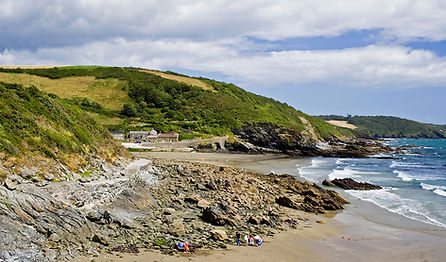
Chapel House
WEST PORTHOLLAND
seaside peace and tranquility
tel: +44 7917 864113
The Porthollands
Few coastal villages are as unspoilt as the two Porthollands, East and West, arranged at the heads of adjacent sandy coves, at the feet of deep twisting valleys, and separated by a crumbling slatey headland.
Thirty years ago when the producers of the first TV series Poldark were looking for unspoilt locations to represent Winston Graham’s vision of 18th Century Cornwall, they alighted on the twin hamlets of East and West Portholland; they used the surrounding area to film many of the coastal scenes and the hamlets themselves were dressed as Roscoff in Brittany.
Thirty years later and very little has changed. The coast here is now designated as an Area of Outstanding Natural Beauty and is protected by Caerhays Estate to the east and National Trust land to the west. In 2014 Tim Burton chose Portholland as major location for the feature film Miss Peregrine's School for Peculiar Children. In 2019, the interior of Chapel House itself was used as a location for Of Tea and Love, a German film adaptation of a Rosamunde Pilcher short story.



East Portholland, the larger of the two hamlets, is mainly residential now, but in Victorian times it had a corn mill, a lime kiln and a public house, The Cutter Inn. The early nineteenth century terrace housed many of the Caerhays estate’s farm workers. Each Portholland has a non-conformist chapel, both now converted to dwellings, but both still dominating their settlements. Chapel House was originally a non-conformist Bible Christian place of worship, its “rival”, less than a quarter of a mile away in East Portholland, belonging to the Wesleyan Methodists.